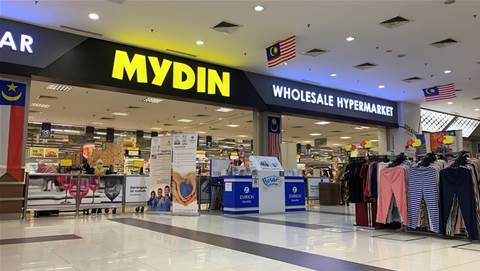Singtel, which has achieved more than 95 percent standalone 5G coverage in Singapore, three years ahead of the regulatory target of end-2025, is using Amazon Web Services (AWS) to enhance its 5G ecosystems for customer enterprises and start-ups to develop 5G solutions on their multi-access edge compute (MEC) infrastructure.
Singtel’s head of technology 5G/IoT, Manoj Prasanna Kumar, told the recent AWS Innovate Online Conference that MEC, leveraging AWS Outposts, is enabling solutions like robotics, drones, autonomous vehicles and artificial intelligence to operate at low latency, closer to the end-users.
The telco’s strategy on 5G and multi-axis edge computing is targeted towards enabling a unified infrastructure at the customer's campus spanning from the edge to the cloud, considering the limitations in traditional hardware or private cloud solutions, Kumar said.
“AWS Outposts is a solution we could identify to enable service providers to operate the full suite of AWS tools and services on their premises,” he added.
The MECs with AWS Outposts can be accessed from the closest Singtel site to help businesses seamlessly operate their applications that use AWS tools and require ultra-low latency data processing, Kumar said.
Singtel can also deploy the solutions at the customer’s location for trials involving confidential data that the customer prefers to retain within their premises.
Kumar explained that the application programming interfaces (APIs) between AWS Outposts and AWS region are almost the same and it supports doing infrastructure as a code and deploying applications in an automated fashion at the edge or the cloud without too many changes in the APIs.
Orchestration platform
Singtel has built an all-in-one orchestration platform with AWS Outposts, and Paragon for 5G edge computing and cloud services, Kumar said.
“It empowers enterprises to interact with the 5G network and deploy their edge computing applications and services on Singtel’s infrastructure independently and securely within minutes,” he added.
Paragon has significantly reduced the complexity and time needed to adopt 5G MEC and low latency applications and services.
“It also helped us to enable faster deployment of use cases while removing considerable operational and cost overheads,” Kumar said.
Enterprises can also access a wide range of solutions from “our partners” to deliver their 5G use cases, he added.
Compared to the current 4G and public cloud-enabled edge computing solutions, Paragon provides a "huge improvement in latency" with much higher bandwidth throughput from Singtel’s 5G network, Kumar said.
This means better performance and faster decision-making at the edge where the data resides, critical for use cases.
“Other unique 5G features like network slicing that usually requires weeks to acquire and setup, can now be done instantly, autonomously and as many times as needed,” he said.
Through the Paragon Marketplace, which operates like an app store, Singtel’s partners can integrate their offerings through a standard API to rapidly build and deploy their solutions on Paragon.
Some of these solutions already available include real-time fleet management, mixed reality and metaverse-based simulations, and smart warehouse management, among others, Kumar said.
5G at Sentosa
Singtel, in partnership with GovTech, has built a national testbed on Sentosa Island with a millimetre wave network, 3.5 GHz (gigahertz) terrestrial network and also edge computing with AWS Outposts and the cloud with AWS region.
Kumar elaborated that Outposts has EKS - elastic Kubernetes services - from AWS that makes it a “perfect infrastructure for applications” which can be containerized to be deployed in an infrastructure agnostic fashion.
“Customers can deploy containerised applications with EKS on Outposts and migrate those applications to EKS on the AWS region, whenever the applications become less mission-critical and vice versa,” he said.
The telco team has been able to deploy several containerised applications at Sentosa, like flying drones across selected spots to do video analytics for public safety, facade inspection to identify cracks in buildings, implementing teleoperated vehicles and is exploring still many more applications, Kumar said.









.jpg&h=271&w=480&c=1&s=1)